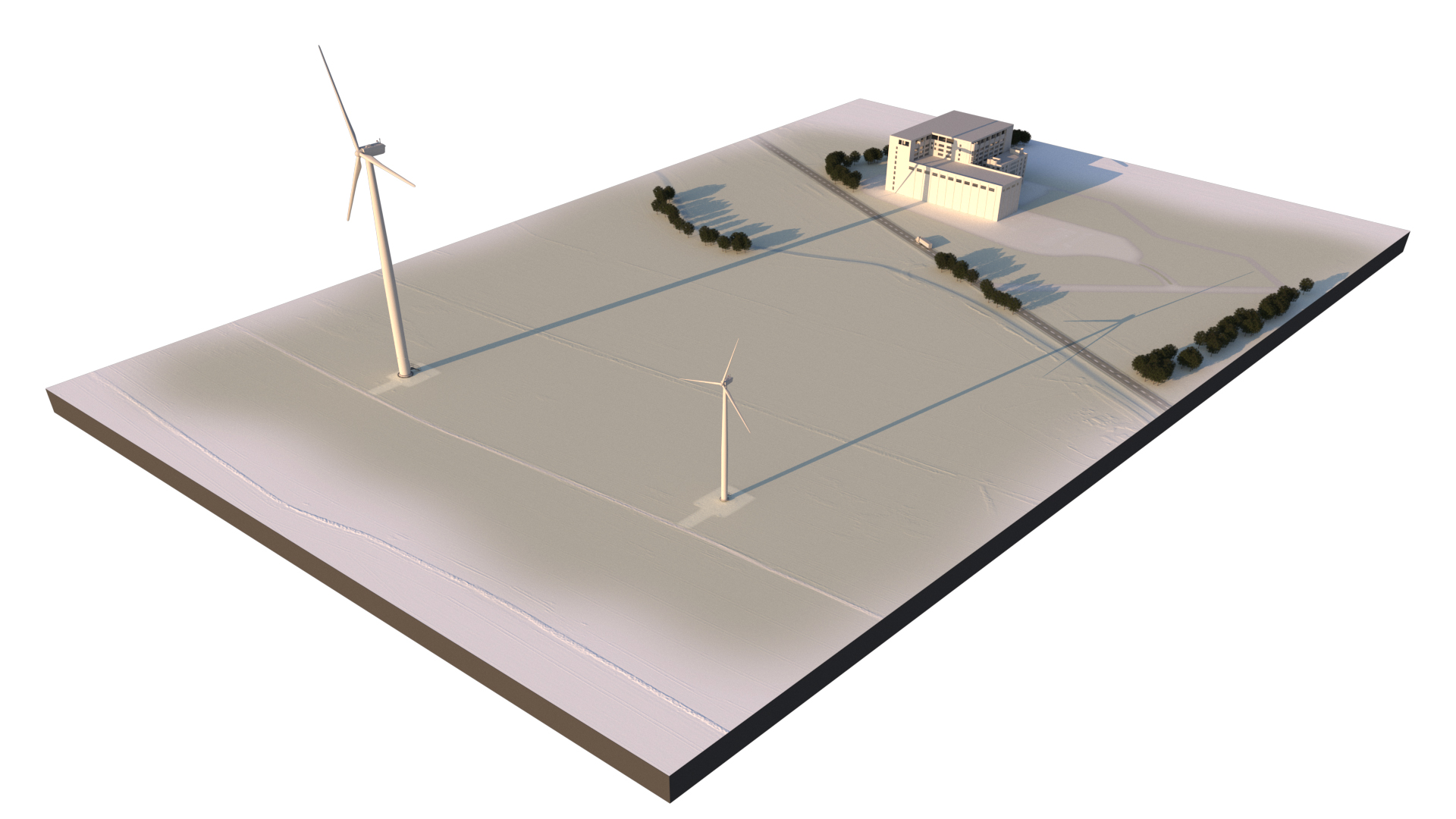Wind Energy Projects and Shadow Flicker

Particular sun angles can result in moving wind turbine blades creating shadows that move across building windows, a phenomena called shadow flicker. Graphic by Josh Bauer, NREL
What Is Shadow Flicker?
Shadow flicker is the effect of the sun (low on the horizon) shining through the rotating blades of a wind turbine, casting a moving shadow.
This phenomenon becomes a concern for nearby communities when the flashing shadow from a rotating wind turbine casts across a building or home because it can cause the perception of a repeating flicker of alternating light and dark periods through windows.
Because of the precise sun angle needed to cause the effect, shadow flicker is rare, occurring in limited locations and for only a few hours each year. However, when it does happen, it can potentially create a nuisance for homeowners in close proximity to turbines.
Does Shadow Flicker Impact Human Health?
Some individuals may have concerns about how shadow flicker could impact their health. In particular, the “flickering” effect may concern individuals who suffer from photosensitive epilepsy (or seizures triggered by flashing lights or contrasting light and dark patterns). However, modern wind turbines rotate at a maximum rate of 20 revolutions per minute (rpm) and have three blades, meaning shadow flicker would never be greater than 3 x 20 = 60 rpm (or 1 hertz). This is well below the 120 flashes per minute (or 3-hertz) threshold known to trigger epilepsy symptoms. Therefore, shadow flicker is not considered a concern to human health.
Minimizing the Potential Impact of Shadow Flicker
To better understand the magnitude, drivers, and mitigation strategies of shadow flicker annoyance, a 2022 Lawrence Berkeley National Laboratory-led study modeled shadow flicker at more than 35,000 homes within 2 kilometers of wind turbines across 17 states and collected in-depth perception and annoyance data from almost 750 of those residences. The study found no relationship between level of shadow flicker exposure and self-reported annoyance from shadow flicker.
This indicates that factors other than the amount of shadow flicker itself likely cause feelings of annoyance about shadow flicker. For example, wind turbine aesthetics and levels of general annoyance to nearby sounds, like those from lawnmowers and traffic, may cause subjective responses to shadow flicker.
Still, computer models, like the ones used in this study, can be helpful in predicting when, where, and to what degree shadow flicker will occur. That information can help wind energy project developers mitigate the potential for impact during the site selection and turbine layout processes.
Many existing wind energy ordinances require a minimum setback distance for wind turbines, meaning new wind energy development projects must be located a specified distance away from existing property boundaries. The required setback distance is commonly determined by the size of the wind turbine. The shorter heights and smaller rotor diameters of small wind turbines create minimal shadow flicker.
Learn more about regulations on identifying a location for (siting) wind turbines and wind energy projects.